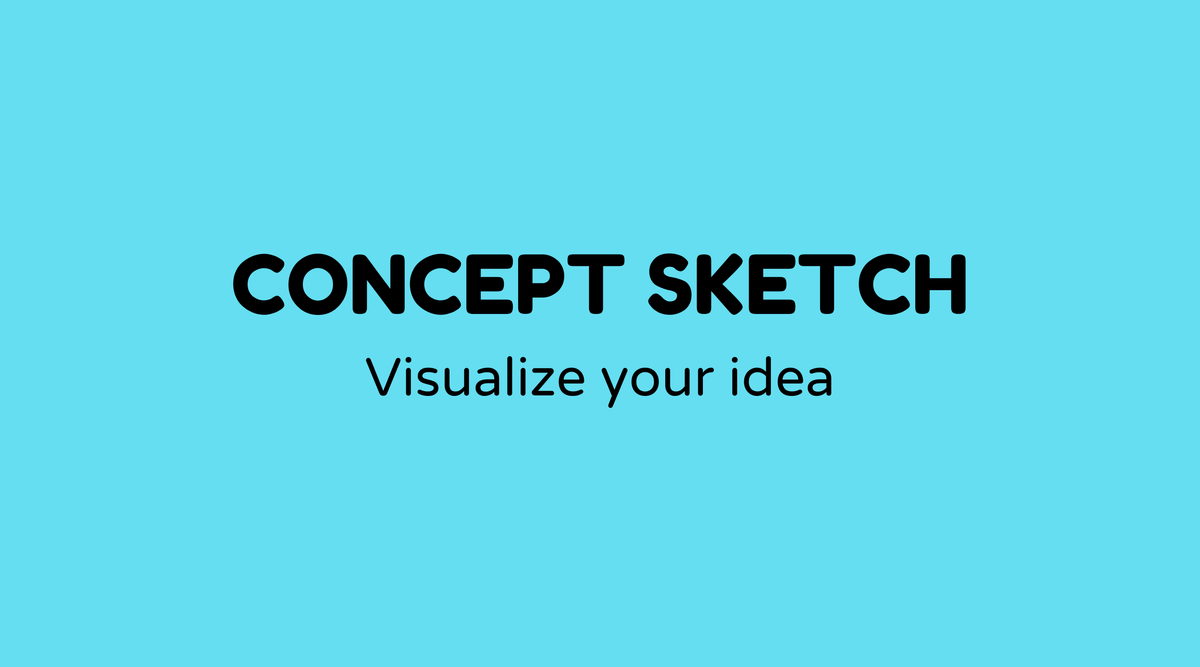Concept Sketch

Overview of Concept Sketch:
When entering the realm of product development, you will likely come across the term concept sketch. A concept sketch is a preliminary drawing or outline that captures an idea, providing a visual representation and offering insight into the future of a product. At this early stage, the sketch does not need to be flawless; its main goal is to communicate ideas rather than to exhibit artistic talent.
Concept sketches play a vital role in the initial phases of product design. They provide a flexible means to examine various design paths quickly and affordably. By bringing an idea to life through sketching, stakeholders can visualize the concept and make informed decisions early in the process.
Why Concept Sketch Matters:
Concept sketches are essential in the product development journey for several reasons. First, they enhance communication among team members, making it easier to express ideas that might be challenging to articulate verbally. Additionally, they offer a platform for experimentation without the risk of substantial financial loss. Revising ideas on paper is much more economical than attempting to develop an undercooked concept into a physical form.
Moreover, concept sketches can document the design process, reflecting the different steps and alterations a product experiences before achieving its final form. This record can be invaluable for future projects or when reassessing design choices.
What is a Concept Sketch:
In simple terms, a concept sketch is a visual illustration of an idea or concept during the early stages of design. These sketches are usually hand-drawn and focus on straightforward, rapid illustrations that emphasize form, functionality, and aesthetics.
Concept sketches are intentionally rough and often contain notes that describe dimensions, materials, or functionality. They serve as a starting point for discussion, rather than finalized representations.
How do you create a Concept Sketch:
Producing a concept sketch leans more towards artistry than strict methodology, but a few steps can guide you:
-
Define the Idea: Begin with a clear understanding of what you wish to convey. Have a specific idea or challenge you're trying to address.
-
Gather Inspiration: Look at existing products, nature, or architecture for ideas that align with your vision.
-
Choose Your Tools: While traditional pen and paper are common, digital tablets and design software can provide more versatility.
-
Sketch Freely: Do not focus on perfection. The objective is to let ideas flow. Use lines, shapes, and shading to express different aspects of your concept.
-
Iterate Quickly: Create several sketches, each one refining and enhancing the previous one. This method helps in exploring all possible directions.
-
Seek Feedback: Share your sketches with team members or stakeholders to gain insights and fresh perspectives.
Examples of Concept Sketch:
Here are some practical examples of concept sketches:
-
Architectural firms often initiate new projects with rough sketches of building designs to propose layout, scale, and appearance.
-
In automotive design, sketches can illustrate the general profile of a car, focusing on innovative contours and aerodynamics.
-
Fashion designers sketch concepts to outline clothing patterns and design elements like fabric flow and color combinations.
FAQs
What is the main goal of a concept sketch?
The primary goal is to visually communicate an idea or concept for a product or design in its early stages.
Can concept sketches be created digitally?
Yes, while traditional methods involve paper and pencil, many designers now utilize digital tablets and software for more flexibility.
How detailed should a concept sketch be?
Concept sketches should be simple and focused on conveying the core idea. Details can be added in later design stages.
What tools are best for concept sketching?
Basic sketching tools include pencils and paper, but many designers prefer digital tools like tablets and software such as Adobe Illustrator or SketchBook.
Is prior artistic skill necessary for making concept sketches?
Not necessarily. The focus is on communication, not artistry. Basic sketching skills can be developed with practice.
How does concept sketching benefit team communication?
Concept sketches help illustrate ideas clearly, promoting better understanding and conversation among team members or stakeholders.



